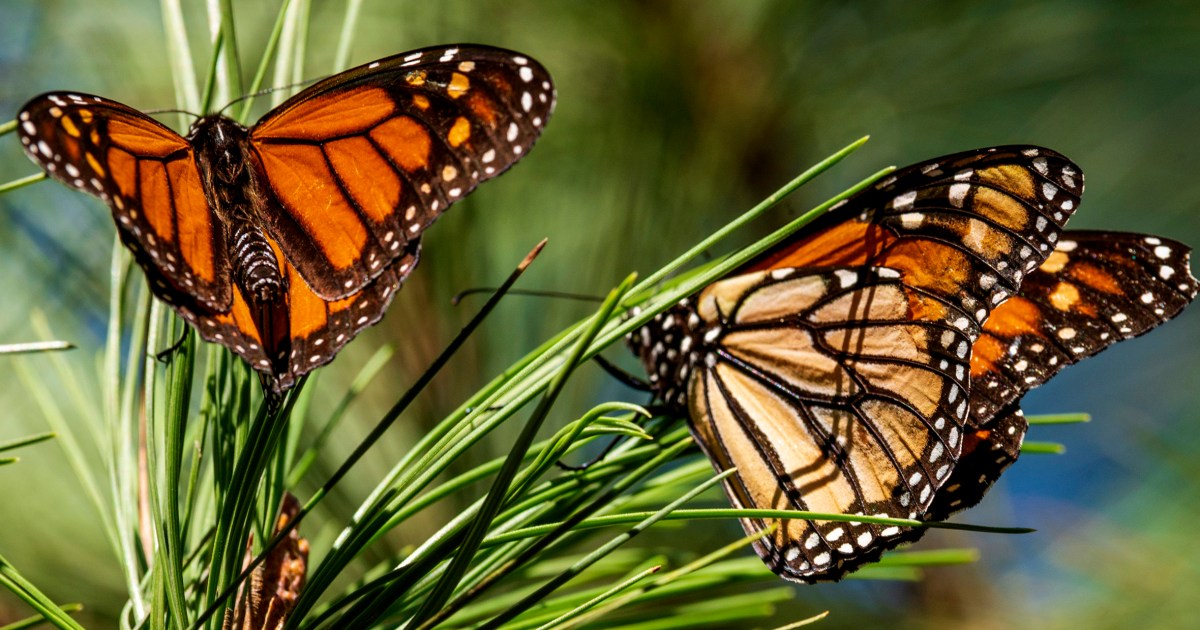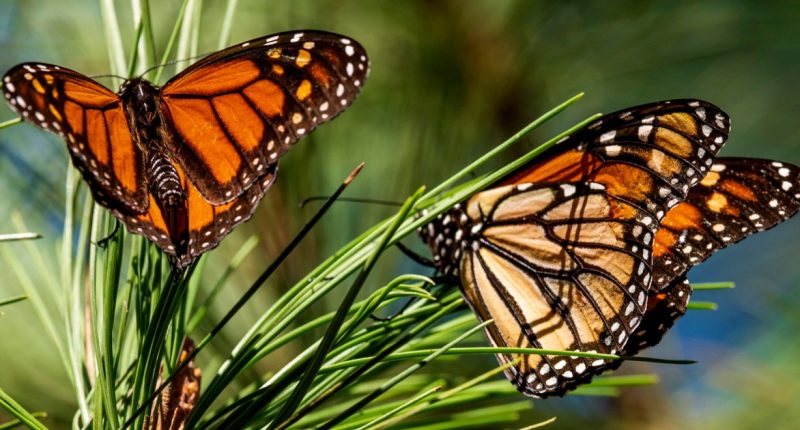
SAN FRANCISCO — The number of western monarch butterflies overwintering in California dropped by 30% last year, likely due to how wet it was, researchers said Tuesday.
Volunteers who visited sites in California and Arizona around Thanksgiving tallied more than 230,000 butterflies, compared to 330,000 in 2022, according to the Xerces Society, an environmental nonprofit that focuses on the conservation of invertebrates.
The population of orange and black insects has rebounded in recent years to the hundreds of thousands after it plummeted in 2020 to just 2,000 butterflies, which was a record low. But even though the butterfly bounced back, its numbers are still well below what they were in the 1980s, when monarchs numbered in the millions.
Scientists say the butterflies are at critically low levels in western states because of destruction to their milkweed habitat along their migratory route due to housing construction and the increased use of pesticides and herbicides.
Climate change is also one of the main drivers of the monarch’s threatened extinction, disrupting the butterfly’s annual 3,000-mile (4,828-kilometer) migration synched to springtime and the blossoming of wildflowers.
“Climate change is making things harder for a lot of wildlife species, and monarchs are no exception,” said Emma Pelton, a monarch conservation biologist with the Xerces Society. “We know that the severe storms seen in California last winter, the atmospheric rivers back to back, are linked at some level to our changing climate.”
Western monarchs head south from the Pacific Northwest to California each winter, returning to the same places and even the same trees, where they cluster to keep warm. They breed multiple generations along the route before reaching California, where they generally arrive at in early November. Once warmer weather arrives in March, they spread east of California.
On the eastern side of the Rocky Mountains, another monarch population travels from southern Canada and the northeastern United States to central Mexico. Scientists estimate that the monarch population in the eastern U.S. has fallen by about 80% since the mid-1990s, but the drop-off in the western U.S. has been even steeper.
Source: | This article originally belongs to Nbcnews.com










